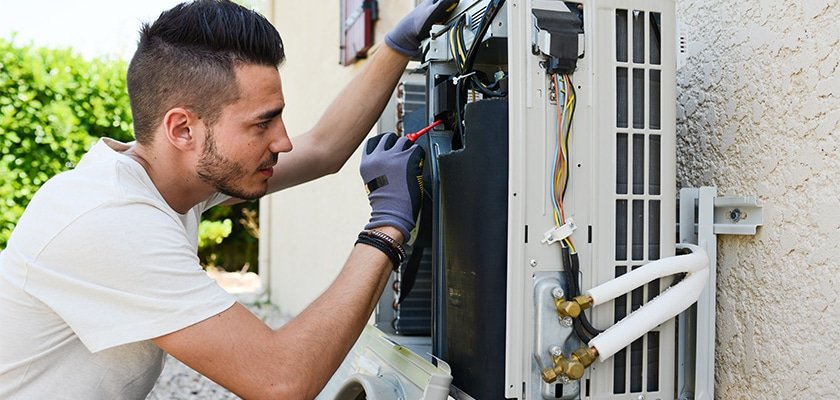A heat pump is a device that transfers heat energy from one place to another, often using pipes filled with refrigerant fluid. Heat pumps can be used to heat or cool a single room, or to heat or cool your entire home. They can be extremely useful and efficient, which is why so many homeowners rely on them. However, even the most well-taken care-of heat pump can malfunction from time to time. Knowing how to address these issues is critical if you want your system to remain in good working order. Fortunately, there are resources that can help. If you need advice, keep reading for some tips for troubleshooting common problems with short-cycling heat pumps.
How can you troubleshoot common problems with short-cycling heat pumps?
A short cycling heat pump is a common problem that can lead to an inefficient heating system. Short cycling occurs when the heat pump runs for shorter periods of time than it should, resulting in frequent on-and-off cycles that prevent the home from reaching desired temperatures. This issue can cause higher energy bills as well as increased wear and tear on the unit itself. The most common cause of short cycling is a lack of airflow across the indoor coil or improper refrigerant levels within the system, which can be remedied by an HVAC technician.
Dirty coils or clogged drain lines may contribute towards shorter run times by preventing efficient heat transfer throughout your home’s HVAC system – meaning regular maintenance should always be conducted in order to keep everything working properly year round. Certain thermostat settings can inhibit correct functionality so they should always remain set correctly according to manufacturer instructions. You can inspect your HVAC unit to try to identify the issue based on the information you find, but the best way to deal with any HVAC issue is to call a professional.
No matter what, you always need to be proactive about HVAC maintenance if you want to avoid preventable problems and breakdowns. That includes having the unit inspected annually, even if you don’t think there’s anything wrong, and ensuring that it is free of debris and dirt. Air filters in your air conditioning system should be changed at least once every 90 days.
What else can you do to maintain your preferred indoor temperature?
Now that you know more about how to address problems with a short-cycling heat pump, let’s talk about some other ways you can maintain your preferred indoor temperature. For example, you should inspect the condition of your windows and doors, not just your HVAC system. Cracks and crevices can create air leaks, which let in outdoor air, moisture, and contaminants that can impact the indoor environment. Imperfections should be sealed immediately with caulk or weatherstripping and major damage may require professional repair.
If you want to make your HVAC system even more effective, then you should consider installing a smart thermostat. Not only does it save you money on your energy bill, but it can make your home more temperate. In addition, a smart thermostat is a great way to stay connected to your home while you’re away. Smart thermostats are able to do this by learning your habits and adjusting the temperature accordingly. Some models are even able to optimize your energy usage to be as eco-friendly as possible and lower your carbon footprint.
Overall, troubleshooting common problems with short-cycling heat pumps is required if you want to ensure efficient operation and get the most out of your HVAC system. By taking the time to inspect, diagnose, and repair any issues you may be having, you can guarantee that your system works properly and continues to provide you with reliable heating and cooling. You can do more than just keep your heat pump in good condition though. You should also ensure your home doesn’t have any air leaks and think about upgrading to a smart thermostat. Follow these tips and you can be sure you’ll be comfortable whenever you’re at home.

